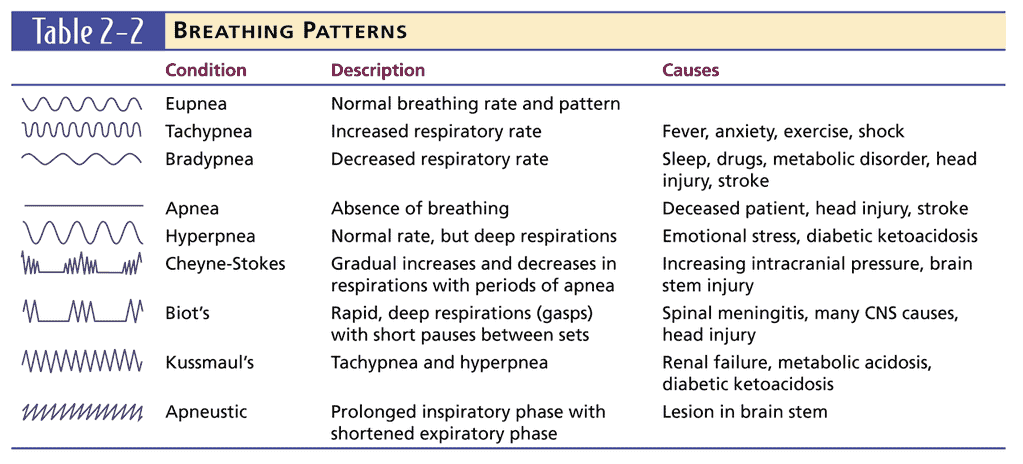Breathing Patterns Before End of Life: Critical Clues for the Last Hours!
Published on August 21, 2023
Updated on June 7, 2025
Published on August 21, 2023
Updated on June 7, 2025

Table of Contents
This article is intended for family members, caregivers, and nurses, new and old. As an experienced hospice nurse, I’ve learned that when a family member or caregiver tells me their loved one is or has “goldfish breathing,” “fish out of water breathing,” or “taking guppy breaths,” the patient is now at the end of their life.
Family members and caregivers who are seeing and hearing this type of breathing pattern, please journal what you are seeing and call your hospice provider if they are unaware of this critical change in condition.
When a hospice nurse hears those words, we should plan a nursing visit as soon as possible (ideally, the same day) to perform a comprehensive head-to-toe assessment.
An early sign of end-of-life typically means the loved one may have up to a month to live, but it is often two weeks or less. Late signs usually mean two weeks or less; some very late signs frequently mean the loved one is in their last three days.
Goldfish breathing, fish-out-of-water breathing, and taking guppy breaths are extremely late signs and critical to be taken seriously in preparing everyone for the last breath.
The hospice nurse should perform a complete head-to-toe assessment to confirm the patient has minutes, hours, and days to live. This assessment should include looking for the following group of signs:
If the patient is not yet admitted to hospice, if the family/power of attorney is willing, consider an emergency admission to hospice, especially if there are late signs present.
Understanding the breathing patterns of a loved one during their last hours is crucial. When someone mentions “goldfish breathing,” “fish out of water breathing,” or “taking guppy breaths,” it often means the person is nearing the end of their life. It’s essential to journal these changes and inform the hospice provider immediately.
As a hospice nurse, I’ve learned that early signs may indicate up to a month to live, while late signs often mean two weeks or less, and extremely late signs may mean the person has only three days left. “Goldfish breathing,” “fish-out-of-water breathing,” and “taking guppy breaths” are extremely late signs, and they should be taken very seriously as the person prepares for their last breath.
To confirm the person’s condition, a hospice nurse should perform a thorough head-to-toe assessment, looking for various signs, such as abnormal breathing patterns, cool extremities, a comatose state, cyanosis, a death rattle, pinned ears, glassy eyes, skin mottling, restlessness, and temperature deregulation.
If the patient is not yet admitted to hospice, consider emergency admission, especially if late signs are present. Remember, during these challenging times, showing love, comfort, and support can make a significant difference to your loved one.
Let’s stay compassionate and attentive to their needs as they approach the end of their life journey.
Interviewing and Observation as part of the assessment
The Importance of Caregiver Journaling
Tips for recognizing terminal restlessness
Tips for new nurses on recognizing the approaching end-of-life
Providing Comfort During the Last Days of Life with Barbara Karnes RN (YouTube Video)
Preparing the patient, family, and caregivers for a “Good Death.”
Velocity of Changes in Condition as an Indicator of Approaching Death (often helpful to answer how soon? or when?)
The Dying Process and the End of Life
As an Amazon Associate, I earn from qualifying purchases. The amount generated from these “qualifying purchases” helps to maintain this site.
Gone from My Sight: The Dying Experience
The Eleventh Hour: A Caring Guideline for the Hours to Minutes Before Death
By Your Side, A Guide for Caring for the Dying at Home
End of life breathing. Gasping. Fish breathing (video)
End of life breathing. Gasping…PART 2 (video)
Trigger warning – educational video of actively dying- examples of changes in breathing (video)
Video of Actively dying (video)
Changes in breathing at the end of life are normal! (video)
Real-life video of Cheyne-stokes breathing (video)
How do you recognize a dying patient? | 5 signs of approaching death (video)
CaringInfo – Caregiver support and much more!
Surviving Caregiving with Dignity, Love, and Kindness
Caregivers.com | Simplifying the Search for In-Home Care
As an Amazon Associate, I earn from qualifying purchases. The amount generated from these “qualifying purchases” helps to maintain this site.
Take Back Your Life: A Caregiver’s Guide to Finding Freedom in the Midst of Overwhelm
The Conscious Caregiver: A Mindful Approach to Caring for Your Loved One Without Losing Yourself
Everything Happens for a Reason: And Other Lies I’ve Loved
Final Gifts: Understanding the Special Awareness, Needs, and Communications of the Dying
Bridges to Eternity: The Compassionate Death Doula Path book series: